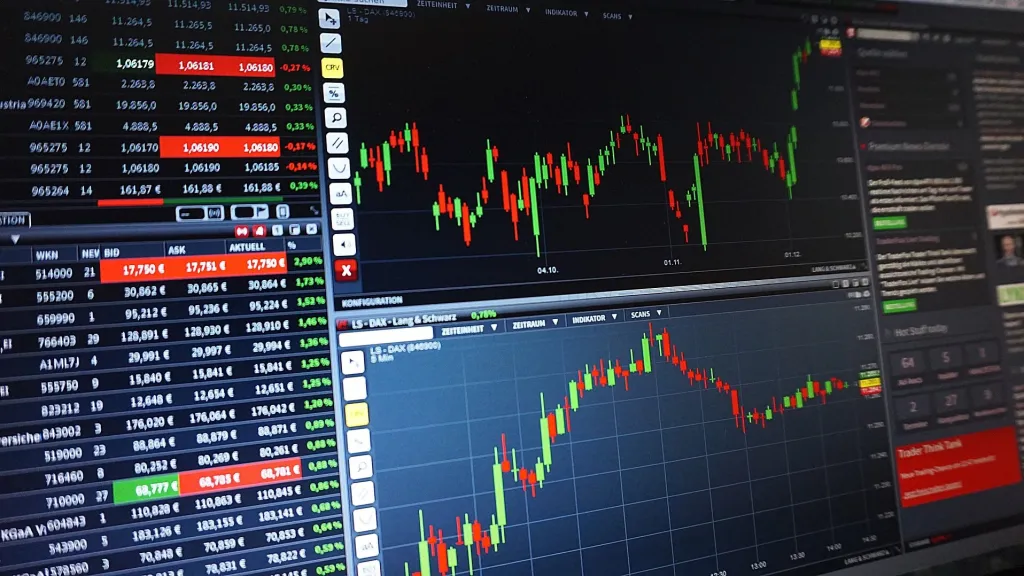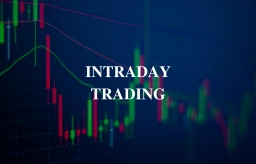What is Intraday Trading?

You may have heard the term “Intraday Trading” and wondered what it meant. Intraday trading is a type of trading that occurs within the same day. That is, all positions are closed out before the end of the trading day. So, what does that mean for you as an investor? In this blog post, we will explore what intraday trading is and how it can be beneficial for you.
What do you mean by Intraday Trading?
When we talk about intraday trading, we’re referring to the act of buying and selling securities within the same day. This means that all positions must be closed before the end of the trading day. And also, no positions are carried over to the next day.
There are a few different reasons why someone might opt for intraday trading. For one, it allows traders to take advantage of short-term market movements. This is especially useful for those who don’t have the time or inclination to hold onto positions for longer periods of time.
Basics of Intra trading
Intraday trading is a type of trading where the trader buys and sells stocks within the same day. The main aim of intraday trading is to make small profits from small price movements in the stock market.
However, it can be a very risky proposition, as prices can move very quickly and unexpectedly. Therefore, it is important for traders to have a good understanding of the stock market. And also, the factors that can affect stock prices before they start trading.
There are a few basic things that all intra day traders should know:
1) How to read a candlestick chart – This will help you identify potential entry and exit points for your trades.
2) What moving averages are and how to use them? – Moving averages can help you smooth out price action and identify potential trend reversals.
3) Support and resistance levels – These levels represent areas where prices have found support or resistance in the past, and also it can give you an idea of where prices might reverse in the future.
Intraday trading indicators
There are numerous indicators that can be used when intraday trading. Each one can provide different information that can be useful in making decisions about trades. Some common indicators include:
Moving Averages
This technical indicator measures the average price of a security over a specified time period, and can be used to identify trends.
Bollinger Bands – This technical indicator uses moving averages to plot upper and lower bands around a security’s price. Further, it can help to identify overbought or oversold conditions.
MACD
The Moving Average Convergence Divergence indicator is a momentum oscillator that measures the difference between two moving averages, and is used to identify trend changes.
RSI
The Relative Strength Index is a momentum oscillator that measures the speed and change of price movements. It is used to identify overbought or oversold conditions.
Stochastic Oscillator
This technical indicator measures the relationship between a security’s current price and its past prices, and is used to identify potential turning points in the market.
Also Read: Difference between Investing and Trading
Benefits of Intraday Trading

Intraday trading can be a great way to make money in the stock market. It allows you to buy and sell stocks within the same day, and can potentially help you make a lot of money if done correctly. There are many benefits to intraday trading, including the following:
1. You can make quick profits
If you’re able to correctly predict which stocks will go up or down in value throughout the day, you can make a quick profit by buying low and selling high. This is one of the biggest advantages of intraday trading.
2. You can limit your risks
Another big advantage of intraday trading is that you can limit your risks. Since you’re only holding stocks for a short period of time, you’re not exposed to the potential risks of long-term investing, such as company bankruptcies or economic recessions.
3. You can take advantage of volatile markets
Volatile markets can be tricky to trade in, but they also offer opportunities for quick profits. If you’re able to read the market well, you can make a lot of money by taking advantage of intra-day price changes.
4. You don’t need a lot of capital to get started
Unlike other forms of trading, such as swing trading or investing in mutual funds, you don’t need a lot of capital to get started with intraday trading. This makes it an accessible form of trading for many people.
5. You can use leverage to boost your returns
Many brokerages offer margin accounts that allow you to borrow money to trade with. This can help you increase your profits if you’re able to correctly predict the market, but it also increases your risks.
How to select Stocks for Intraday trading?
When selecting stocks for intraday trading, there are a few key factors to keep in mind.
First, you want to look for stocks that are highly liquid, which means they have high trading volume and are less likely to be subject to large price swings.
Second, you want to look for stocks with tight bid-ask spreads, which is the difference between the prices that buyers and sellers are willing to trade at. Further, The tighter the spread, the less chance there is of slippage, or losing money on a trade.
Finally, you want to look for stocks that are volatile, which means they move up and down in price frequently. These stocks are more likely to produce opportunities for profitable trades.
Advantages and disadvantages of intraday trading
There are both advantages and disadvantages to intraday trading. Some of the main advantages include:
1. The ability to take advantage of short-term price movements: Because intraday traders only hold their positions for a short period of time, they can take advantage of even small price movements.
2. Increased liquidity: There is typically more liquidity in the market during the daytime hours when intraday trading takes place, as this is when most people are active in the market. This means that there is usually less slippage (the difference between the expected price of a trade and the actual price) for intraday traders.
3. Less risk: Since intraday traders do not hold onto their positions overnight, they are not exposed to the same level of risk as those who invest for longer periods of time.
Some of the main disadvantages of intraday trading include:
1. High level of discipline required: Intraday trading requires a high level of discipline, as trades must be carefully managed throughout the day. Positions must be monitored constantly and strict stop-losses should be put in place to limit potential losses.
2. Increased costs: Since intraday traders typically make more trades than those who invest for longer periods of time, they will also incur more transaction costs. These costs can eat into profits and should be considered when determining whether or not intraday trading is right for you.
3. Emotional rollercoaster: The fast-paced nature of intraday trading can be a emotional rollercoaster, as positions can move quickly from being in the red to being in the green (and vice versa). So, this can be stressful for some people and may not be suitable for everyone.









